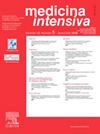弹性静态功率与急性呼吸窘迫综合征严重程度的相关性:机械功率日横断面试验的贝叶斯事后分析
IF 3.1
4区 医学
Q2 CRITICAL CARE MEDICINE
引用次数: 0
摘要
目的探讨不同幂方程与急性呼吸窘迫综合征(ARDS)严重程度的关系。本研究旨在评估一组伴有和不伴有ARDS的机械通气患者的各种功率方程:总机械功率、总弹性功率(包括弹性静态功率和弹性动态功率)和阻力功率。贝叶斯分析通过纳入先验分布来改进估计和量化不确定性。DesignA对机械动力日研究的数据进行贝叶斯事后分析。在4大洲15个国家设有113个重症监护室。接受容积控制模式有创机械通气的成人患者,伴(轻、中/重度ARDS)和无ARDS。干预措施:主要变量:弹性静力。结果轻度ARDS患者弹性静功率为5.8 J/min (BF: 0.3),中重度ARDS患者弹性静功率为7.4 J/min (BF: 0.9)。贝叶斯回归和建模分析表明,弹性静力与轻度(后验均值:1.3;95%可信区间[间隔]:0.2-2.2)和中度/重度ARDS(后验平均值:2.8;95%的信誉。区间:1.7-3.8)比其他幂方程更强。结论在所有功率方程中,弹性静力与ARDS严重程度的相关性最强。需要前瞻性研究来进一步验证这些发现。本文章由计算机程序翻译,如有差异,请以英文原文为准。
Elastic static power, its correlation with acute respiratory distress syndrome severity: A Bayesian post-hoc analysis of the Mechanical Power Day cross-sectional trial
Objective
The relationship between different power equations and the severity of acute respiratory distress syndrome (ARDS) remains unclear. This study aimed to evaluate various power equations: total mechanical power, total elastic power (comprising elastic static and elastic dynamic power), and resistive power, in a cohort of mechanically ventilated patients with and without ARDS. Bayesian analysis was employed to refine estimates and quantify uncertainty by incorporating a priori distributions.
Design
A Bayesian post-hoc analysis was conducted on data from the Mechanical Power Day study.
Setting
113 intensive care units across 15 countries and 4 continents.
Patients
Adults who received invasive mechanical ventilation in volume-controlled mode, with (mild and moderate/severe ARDS) and without ARDS.
Interventions
None.
Main variables of interest
ARDS, Elastic static power.
Results
Elastic static power was 5.8 J/min (BF: 0.3) in patients with mild ARDS and 7.4 J/min (BF: 0.9) in moderate/severe ARDS patients. Bayesian regression and modeling analysis revealed that elastic static power was independently correlated with mild (a posteriori Mean: 1.3; 95% Credible Interval [Cred. Interval]: 0.2–2.2) and moderate/severe ARDS (a posteriori Mean: 2.8; 95% Cred. Interval: 1.7–3.8) more strongly than other power equations.
Conclusions
Elastic static power was found to have the strongest correlation with ARDS severity among the power equations studied. Prospective studies are needed to further validate these findings.
求助全文
通过发布文献求助,成功后即可免费获取论文全文。
去求助
来源期刊

Medicina Intensiva
CRITICAL CARE MEDICINE-
CiteScore
2.70
自引率
20.00%
发文量
146
审稿时长
33 days
期刊介绍:
Medicina Intensiva is the journal of the Spanish Society of Intensive Care Medicine and Coronary Units (SEMICYUC) and of Pan American and Iberian Federation of Societies of Intensive and Critical Care Medicine. Medicina Intensiva has become the reference publication in Spanish in its field. The journal mainly publishes Original Articles, Reviews, Clinical Notes, Consensus Documents, Images, and other information relevant to the specialty. All works go through a rigorous selection process. The journal accepts submissions of articles in English and in Spanish languages. The journal follows the publication requirements of the International Committee of Medical Journal Editors (ICMJE) and the Committee on Publication Ethics (COPE).
 求助内容:
求助内容: 应助结果提醒方式:
应助结果提醒方式:


